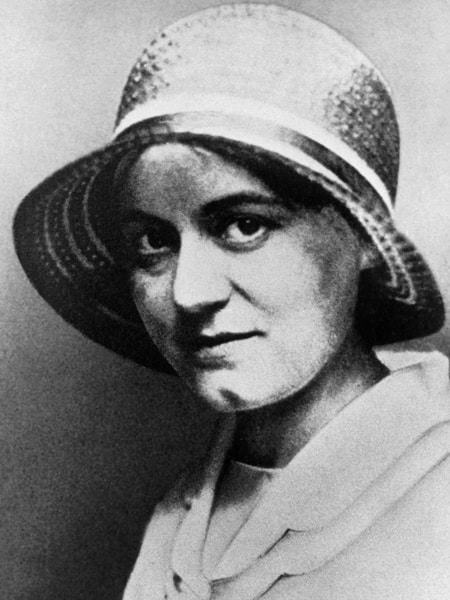5 Reasons Why Jewish Prof. Edith Stein Became a Catholic Nun
Saint Teresa Benedicta of the Cross (aka Edith Stein, 1891-1942) is a saint, nun, and martyr of the Catholic Church. I have studied her life (see the chapter related to her in my book The Crucified Rabbi) and have since distilled 5 speculative reasons why Professor Judith Stein went from Jewish Prof to Catholic Nun:

- Edith was born on the Jewish feast day of the Day of Atonement.
From an early age she perceived herself as special chosen by God and situated her own life into the Jewish theology of atonement. Whereas ancient Old Testament Judaism has a rich theology of blood atonement, contemporary rabbinical Judaism (as I cover The Crucified Rabbi) has no way of providing blood atonement according to the precepts of Moses. - Edith lost faith in early Feminist movement.
She described herself as a “radical suffragette” who eventually “lost interest in the whole issue.” She turned to philosophy and then eventually Catholicism to provide answers to the problems facing women in the 20th century. Ultimately, she found those answers in the Carmelite convent as a place of silence, religious obedience, mortification, study, and prayer. - Edith studied phenomenology under the guidance philosopher Max Scheler.
Philosophy has been plagued by the problem of how the mind knows and interacts with the world. If our perceptions are different from one another and different at various times of life, is there truly an objective reality outside our mind. Phenomenology seeks to bridge the real world to the phenomena of our mind. Ultimately, it took a Catholic guide in the person of Max Scheler to guide Edith to the philosophical Realism that Catholicism offers. Scheler called his philosophy a “return to things” or a “turn to reality.” - Edith’s dissertation thesis was titled “The Problem of Empathy.”
As a professor myself, you can tell a lot about a professor by just knowing the title of the doctoral dissertation. The philosophy of empathy (literally “suffering in another”) maps neatly onto Catholicism, with its universal call to mercy and its pattern of faithful suffering and martyrdom. Even before she was a Catholic, she wrote the following in her dissertation: “There have been people who believed that a sudden change had occurred within them and that this was a result of God’s grace.” Clearly, she was already finding her way to Christ. - Edith read the autobiography of St. Teresa of Avila in one night.
During her philosophical struggles with empathy, psychology, and suffering, she came across a book about the Carmelite spiritual master Saint Teresa Avila. “When I had finished the book, I said to myself: This is the truth.” Notice she said “the truth” and not simply “truth.” She had found Christ Himself.
I’m sure there are dozens of other events and inspirations that led Edith Stein into the Catholic Church. She was baptized on the feast of the Circumcision of Christ (Jan 1) in 1922. She entered the Carmelite convent twelve years later in 1934 taking the name Teresa Benedicta of the Cross (German: Teresia Benedicta vom Kreuz). She received the crown of martyrdom under the Nazis on August 9, 1942
Saint John Paul II canonized Edith on Oct 11 1998 as “a daughter of Israel” and as a martyr of the Catholic Church.
One interesting fact is that the final miracle for her canonization came from Eastern Catholic devotion to her. You can read about that miracle among the Melkite Catholics here.
[reminder]Do you have devotion to Saint Teresa Benedicta? Do you know of any other intimate details from her life?[/reminder]
What to Watch Next
SHOP THE TAYLOR MARSHALL STORE
Dive Deeper

GET CONFIDENT IN YOUR FAITH
Explore the fascinating world of Catholic teachings with Dr. Marshall. Together you’ll unpack the brilliant answers the Church gives to tough questions about the Faith. The best part: you go at your own pace. Start this exciting journey today.


 >
>


